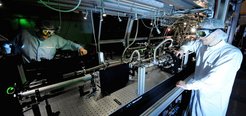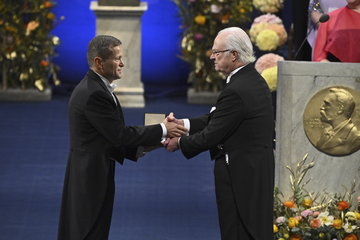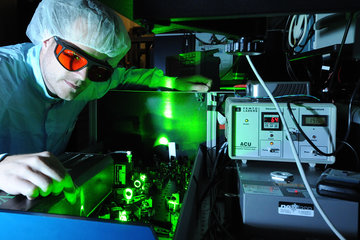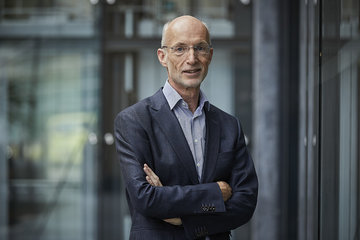Brief reflections from a plasma mirror
Intensive, isolated attosecond pulses enable electrons to be produced more quickly from relativistic plasmas
It’s a reflective surface at the boundary of feasibility. A dense sheet of electrons is accelerated to almost the speed of light as a reflective surface. With the aid of this plasma mirror of fast electrons, physicists can modify the beam of light. An international team of physicists from the Max Planck Institute of Quantum Optics, LMU Munich and Umeå University in Sweden have used this phenomenon to generate isolated, high-intensity attosecond pulses. An attosecond lasts for a billionth of a billionth of a second.

The interaction between extremely powerful laser pulses and matter is being used to beneficial effect. The German-Swedish team of researchers have opened up a new approach to researching the microcosm by producing light flashes lasting for only a few hundred attoseconds. Ultra-short pulses of light are generally produced through the interaction of laser light and electrons in atoms of noble gases.
Researchers from the Laboratory for Attosecond Physics at the Max Planck Institute of Quantum Optics in Garching and Munich’s Ludwig Maximilians University (LMU), in collaboration with colleagues at Umeå University, have successfully allowed laser pulses lasting a few femtoseconds to interact with glass. A femtosecond is a thousand times longer than an attosecond. The laser light ionizes the glass surface and accelerates the liberated electrons to velocities reaching almost the speed of light. The resulting high-density plasma made up of rapidly moving electrons, which propagates in the same direction as the pulsed laser light, acts like a mirror. Once the electrons have attained velocities approaching the speed of light, they become relativistic: they begin to oscillate in the laser field and act like a mirror which in turn generates ultra-short light pulses. In their experiments, the physicists observed how the pulses are generated, i.e. tracked them and the movement of the plasma mirror.
More intense attosecond pulses brighten the microcosm
These light pulses have an estimated duration of approximately 200 attoseconds and wavelengths in the extreme ultraviolet range of the spectrum. In contrast to standard generated attosecond pulses, physicists were able to precisely control the pulses using the waveform of the laser to stimulate the gas. The light pulses produced in the plasma mirror also have a much higher intensity, i.e. more agglomerated light particles than standard attosecond light pulses.
Attosecond light pulses are primarily used to research electron motions and thus provide detailed insight into the dynamics of fundamental processes within nature. The higher the intensity of the attosecond light flashes from the plasma mirror, the more information can be gleaned about the microcosm. Because the more intense the attosecond light flashes are, the easier it is to identify the motion of particles deep within matter. Researchers are therefore hoping to use the new quantum-optical instrument to make discoveries which can lead to the development of higher performance electronic components to improve understanding of illness and introduce new approaches to treatment.
TN/PH










